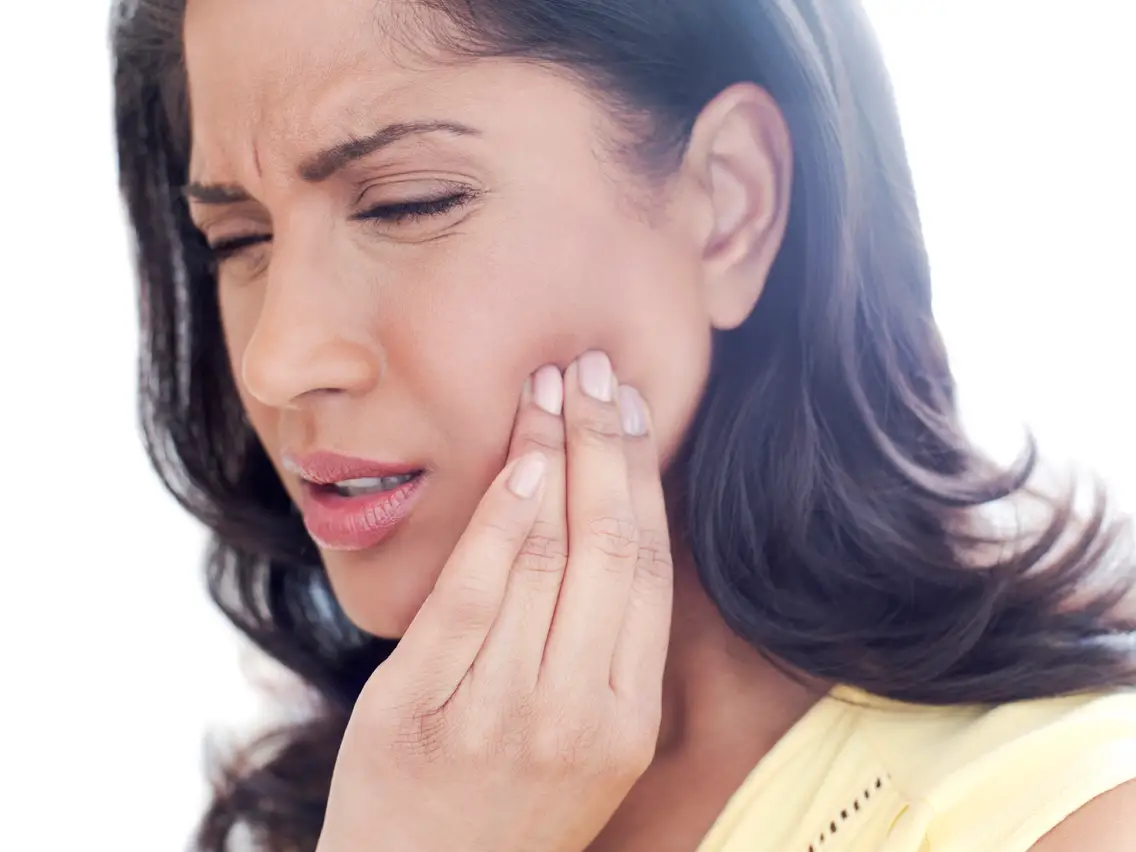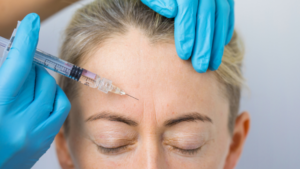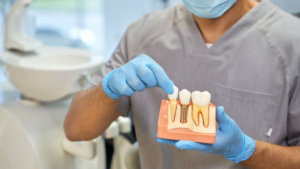A sudden toothache can be completely debilitating.
It can cause excruciating pain, alarming facial swelling, and can even be accompanied by flu-like symptoms if left untreated.
It is little wonder then that 20% of all people who suffer toothache have to take time off work or school.
Now there is only one solution to get rid of a toothache safely and permanently — you need to go and see the dentist.
Not always the most practical advice, right?
Your toothache may flare up at night, or on a Sunday, or while you are away from home.
We therefore offer a comprehensive guide on how to stop toothache pain at home, and how to get a dentist to put you out of pain as quickly as possible.
This will include how to quickly ease pain and swelling, how to find the best emergency dentist, what actually happens during an emergency dental appointment, and how to avoid any toothache in the future.
Contact Us
How to get toothache pain relief instantly
To know how to best manage a toothache at its source, you need to understand what its cause is.
Nearly all tooth pain is caused by swelling inside a tooth.
The reason why swelling inside the tooth causes more pain than swelling in any other part of the body is because the surrounding tooth structure is hard and inflexible.
This means that the swelling inside the tooth has nowhere to go.
Whereas most body parts can expand in size when inflamed, your teeth cannot accommodate such pressure.

This pressure is why a toothache can make you feel like your tooth is about to explode.
The pulp (blood supply and nerves) inside the tooth becomes too large for the hard surface surrounding it.
Now the agony makes sense.
Understanding that the pain of a toothache is caused by swelling can help you get rid of such pain more effectively.
The key is to gear everything you do to reducing the swelling inside the tooth.
Anything you do that does not reduce this swelling will cause only fleeting relief at best.
With this in mind, here are the best ways to reduce swelling quickly and therefore reduce toothache pain.
Get fast relief using painkillers
Painkillers are the best thing to stop a toothache in the short term.

Even over the counter pain medicine can provide a considerable amount of relief from toothache.
However, not all over the counter painkillers are equally as effective in reducing the pain from toothache.
Here’s the deal:
To best reduce toothache you need to take painkillers that are designed to reduce swelling as well as reducing the sensation of pain.
There are three main painkillers that are readily available over the counter in the UK.
These are Ibuprofen (Neurofen), Aspirin, and Paracetamol.
Out of the three of these painkillers, we would recommend taking Ibuprofen (or Aspirin if you are over 18)
This is why:
Ibuprofen and Aspirin have anti-inflammatory properties, meaning that they reduce swelling.
However, it is incredibly important that you do not take aspirin if you have any bleeding from from your mouth.
Aspirin prevents blood from clotting and can increase bleeding.
Paracetamol is a good painkiller but is less effective at reducing swelling, and therefore will provide less pain relief if you have a toothache.
It can, however, be effectively used in conjunction with either Ibuprofen or Aspirin.
We would recommend alternating between taking 400mg of Ibuprofen (or 600 mg of Aspirin) and 500mg of Paracetamol every two hours.
This should leave a four hour gap between the dosages of the same painkiller, which is a safe amount of time to avoid overdose.
Please do not however exceed the daily dose of each drug as recommended on the box.
Do not stop this cycle of painkillers even if the pain has subsided.
If you stop taking the anti-inflammatory painkillers the swelling inside the tooth will reappear and the pain will return.
Remember, the aim here is to keep swelling at bay.
You should also avoid using Aspirin in conjunction with Ibuprofen, as both painkillers can cause stomach irritation.
Halt the progression of a toothache by rinsing the painful tooth and gums
A second, highly effective way of reducing toothache pain is by rinsing the affected teeth with a mildly antiseptic solution.
Here’s how this simple solution works:
The swelling that causes painful pressure inside a tooth is due to bacteria getting inside the tooth via a hole or crack.
Swelling will therefore only cease once the bacteria has been killed or removed.
This is what rinsing does.
As it reduces the amount of bacteria inside a tooth, regular rinsing can help ensure that a toothache does not get any worse.
There are many different natural mild anti-septics available. Clove oil has been recommended by some dentists, but the most practical solution will likely be regular table salt.

If you are physically able to, try mixing a small (100ml) glass of warm water with a good teaspoonful of salt.
Stir the salt into the water until it can dissolve no more.
Then swill the saltwater around the painful area for at least one minute. Repeat this rinsing as often as you can.
Once an hour is a good target to aim for.
Although the saltwater solution may taste unpleasant, the swilling should not hurt your tooth or gums further.
Some suspect that it will be like “rubbing salt into an open wound” but that is simply not the case.
If you have it, you should also rinse the affected area with Corsodyl, as this has a slightly stronger anti-septic affect.
Stop further swelling easily by keeping your head elevated
As swelling is the result of fluid rushing to an infected area of the body, it can be reduced my making it mechanically more difficult for such fluid to flow into the swollen area.
One way of doing this is by making sure your head is raised above your heart.
This is particularly important for getting rid of a toothache during the night.
If you have to lie down, either because you are trying to sleep or feel too unwell to stand or sit, then you should be propping your head up on several pillows.
This means that fluid has to fight against gravity in order to get inside your infected tooth. The blood pressure in your head is also higher when lying flat and contributes to the pain.
Keeping your head elevated should therefore cause less swelling, and less pain.
The higher your head is raised the better, so if you can sit-up then that is ideal. However keeping your head elevated on several pillows is a lot better than lying flat.
Control pain and swelling further with ice
As with elevation, cooling down an inflamed area can reduce swelling as it slows down the flow of fluids to the infected area.
Ice is the easiest way of cooling down the area surrounding a toothache.
Use an ice pack, or frozen peas wrapped in a towel.
Do not apply ice directly to your face as this can cause skin burns.
Apply the ice to the face for 10 minutes every hour if you can. Continue to apply the ice even after the swelling has gone away.
This will help stop the swelling from coming back.
Should I brush my aching tooth?
Yes.
You should continue brushing your teeth as normal when you have a toothache.
You should not neglect brushing the affected tooth, as this will accelerate the rate that bacteria builds up in and around the cavity.
This build up of bacteria may make the swelling, and hence the pain, even worse.
Brushing your teeth will not, however, make the toothache go away (sadly).
Now the pain is manageable — How do you access a dentist?
How to best access the dental care needed to put an end to your toothache depends on several factors.
These factors include whether you currently have a regular dentist, whether you have private dental treatment or treatment on the NHS, and whether your dentist is available at the time your toothache flares up.
Accessing emergency dental care on the NHS if I don’t have a regular dentist
There are two ways of finding a nearby NHS dentist who can see you at (relatively) short notice as an emergency patient.
Find a dentist quickly yourself using Google
The first of these, which we would most recommend for anyone who wants NHS treatment and who does not have a current dentist, is to simply Google “NHS emergency dentist near me”.

Searches that ask for a service followed by “near me” usually bring up a map marked with the relevant locations near you.
Importantly, you will also get a list of relevant practices, along with information such as their phone number, website and (most crucially of all) their opening times.
If a practice is open, you have every opportunity to try and book an emergency appointment as soon as possible.
Of course when you will get one depends on their availability.
Unfortunately, a dentist may be less eager to squeeze you into a tight schedule if you are new to them.
Get help finding an NHS dentist using 111
If you want support finding a local NHS emergency dentist, you can do so through calling 111.
111 is an NHS helpline for emergencies that require medical support but do not need an ambulance.
If you call 111 you can get free advice over the phone, and be put in touch directly with a local NHS dentist.
As useful as this sounds, it may not be ideal.
Here’s why:
1) As the 111 line serves the whole of the UK, the line is often busy.
It is not uncommon to be on hold on 111 for over 15 minutes. You can find an NHS dentist who takes emergencies online in one minute.
Which option sounds more appealing when you want fast pain relief?
2) The Google Map listings show you local dentists’ opening hours.
This allows you to choose a dentist which fits around your schedule, or simply browse though until you find one that is currently open.
You can therefore pick a dentist on location, how often they are open, or even how well they have been reviewed by other patients.
Calling 111, on the other hand, will usually give you one dentist, and tell you to go there.
In short finding a dentist on Google is quicker and more flexible than finding one on 111.
If quick pain relief is what you want, finding your own dentist is a superior option.
Accessing emergency dental care on the NHS if I have a regular dentist
Most NHS dentists are able to offer emergency treatment at short notice.
Therefore, if your regular dental practice is open, all you need to do is call, and explain that you are in severe pain.
With a bit of luck you should be able to get an appointment that day.
But what if your regular dentist is not open?
Then, you will need to find a local out-of-hours dentist.
These are practices that are geared to provide emergency treatment outside of usual working hours.
They can be found either using a simple Google search (“out of hours emergency dentist near me” should work) or through calling 111.
Please note that emergency NHS dental treatment is always charged at £21.60.
You can claim back this treatment if you are eligible for free NHS dental care. This includes under 18s, some students, and pregnant women or new mothers.
For more information about eligibility for free NHS dental care, please click here.
Accessing a private dentist for emergency care
Having a good relationship with a private dentist makes getting emergency care for a toothache easy.
A good private dentist should be able to squeeze you in to even a very busy schedule. As long as they are open you should be able to get an appointment on the same day.
Isn’t that great?
Many private dental practices have dedicated emergency numbers where you can contact a dentist out of hours.
So ask your current dentist if his/her practice offers this service.
If you would like your toothache to be treated privately, and you do not have access to your regular dentist, a simple Google search should allow you to find a private dental practice that takes emergencies nearby.

Call them, and explain the situation.
Private practices are likely to give priority to existing patients, so you are not guaranteed to get treated the same day as you call.
That being said you are free to call as many practices as you like in order to get seen as soon as possible.
Should I go to A&E for a toothache?
A&E is not a useful place to get your toothache treated
In almost all cases no.
You are very unlikely to access a dentist from A&E, and therefore it will not be of much use to you to go there for a toothache.
You should only consider going to A&E for a toothache if it is accompanied by heavy bleeding, or if the pain is so bad that you need prescription painkillers.
You will need to follow this up by finding an emergency dentist to get rid of the toothache permanently.
What will happen at an emergency appointment with the dentist?

The aims of an emergency dental appointment are three-fold.
These are:
- To put you out of pain
- To diagnose the cause of the toothache
- To arrange follow up treatment to permanently solve the cause of the toothache.
Putting you out of pain
An emergency dentist will do everything they possibly can to get you out of pain.
This can include killing the nerve inside the tooth (as irritation to nerves is what causes pain), fixing holes with temporary sealants, and/or prescribing stronger painkillers.
This is not a long-term fix however:
These solutions will only end intense pain temporarily.
Further diagnoses and treatment of the toothache is still needed.
The dentist will go on to explain to you how to best solve your dental problem long term, as well as telling you how to manage the problem in the meantime.
This can include prescriptions for painkillers and antibiotics, as well as specific instructions for specific problems.
Diagnosing the cause of your toothache
Diagnosing the cause of your toothache will likely involve the dentist looking at the affected area in your mouth. They may also take an x-ray of your mouth.
The dentist may also ask you some questions to help them figure out what the underlying problem is. These can include:
- Descriptions of the nature of the pain (is it constant or intermitted, sharp or achey etc.)
- Whether the tooth is sensitive to hot or cold
- Whether the tooth has had any previous treatment, such as a crown or filling
- Whether the tooth has suffered any trauma such as a knock
The better answers you can give to these questions, the more quickly and accurately they can diagnose the cause of your toothache.
Have a think about these things before your emergency appointment.
Arranging follow up treatment to for a long term solution
Following a dentist’s diagnosis of the cause of your toothache, they will recommend how to best solve your dental problem long term.
Depending on the nature of your problem, this could involve a filling, root canal treatment, or even extraction of the offending tooth.
Depending on the type of practice you are at, you may be able to book the necessary treatment there and then.
If the practice where you have had your emergency treatment cannot also accommodate your follow up treatment, you can ask to be referred to one who can.
This often happens if you have emergency treatment on the NHS.
Although you do not have to go through with this follow up treatment, it is the only way that you can avoid your toothache from flaring up again.
If left untreated a toothache will likely return!
Emergency treatment on the NHS usually costs £21.60.
Private prices can vary from nothing to £150.
[ps2id id=’prevention’ target=”/]
How to avoid ever having toothache in the future
As with all medical issues, preventing a toothache is preferable to having to cure it.
Prevention will save you having to go through days of intense pain, save you money, and will lead to the healthiest outcome for your teeth in the long term.
There are countless people who go through their whole lives without suffering the agony of toothache.
This is no coincidence.
Although genetics do play a small role in your likelihood of getting toothache, your approach to looking after your oral health plays a much bigger role.

However we do want to let you in on what we think is the most underrated factor in preventing future toothaches.
This is having regular visits with the dental hygienist.
Here’s something no dentist will ever want to admit:
The hygienist plays arguably a bigger role in preventing toothache than the dentist.
The hygienist’s key role is to remove plaque from your teeth.
The build-up of plaque over time is what causes cavities and therefore toothache.
Although brushing and flossing go a long way to getting rid of plaque, it is impossible for even the most diligent brusher to remove all of it.
Even tiny amounts of plaque, if left on the surface of you teeth for a long period of time, can create tooth cavities.
That is why the thorough scrubbing provided by a hygienist is absolutely necessary.
We would actually recommend that you visit the hygienist more often than you visit the dentist.
A hygiene appointment every 3 months is optimal if you want to ensure that you never have tooth pain.
Dental check-ups, on the other hand, are only necessary every 6 months to 1 year depending on your risk to decay.
Combine regular hygiene appointments with all the other well known preventative measures and the chances of you ever having another toothache will be very low indeed.






